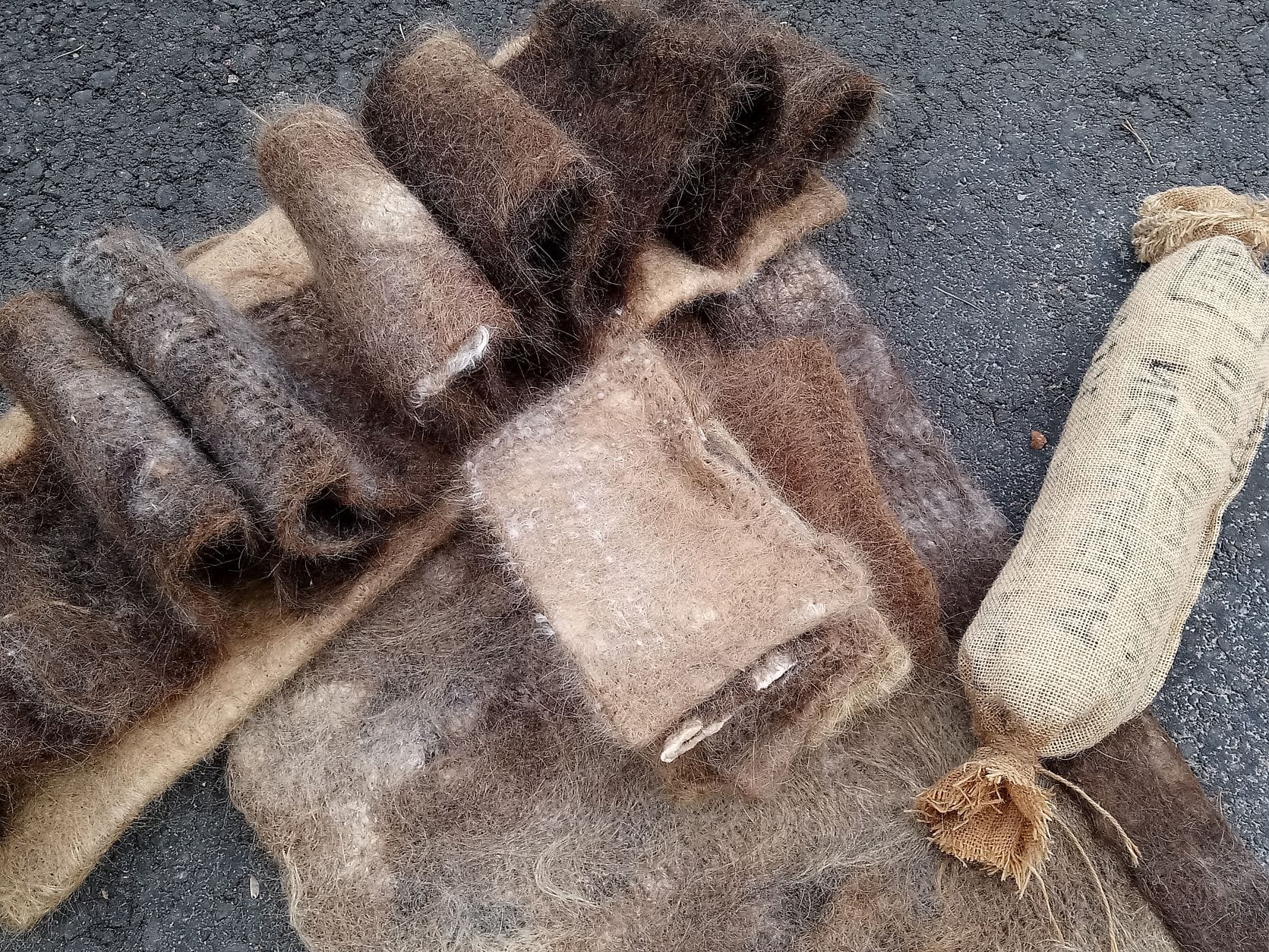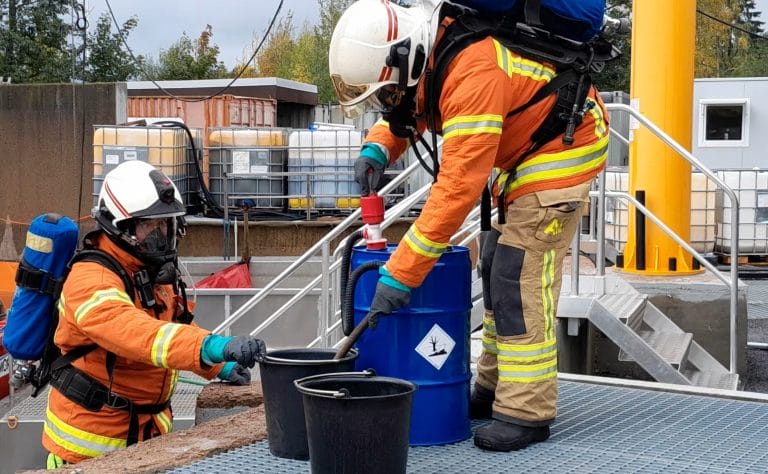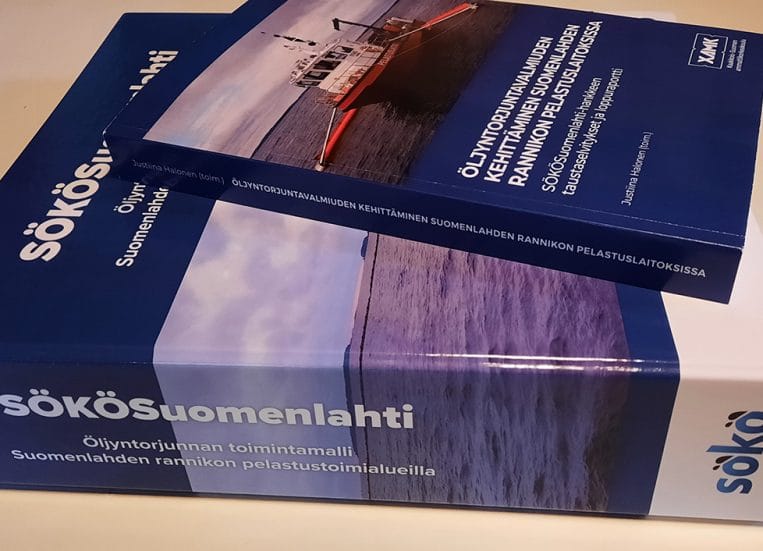A Hair-Raising Novelty for Onshore Oil Recovery?
The use of hairs in oil spill response operations has been investigated in various studies and has also been tested in real oil spills. The most recent examples can be found in oil spill response operations in Mauritius (2020) and on the Peruvian coast (2022). In Mauritius, local residents collected human hair, and in Peru also dog and llama hair to make adsorption materials.
CONTROVERSIAL REPUTATION OF HAIRS
There are many opinions on the use of hairs for oil spill response. It is generally acknowledged that hairs have good adsorption capacity for oil. However, the use of hairs has been limited by their poor handling characteristics: bulk hairs are difficult to control, they drift with currents and wind, and may sink when saturated with oil. Trying to solve this, hairs have been packed into different forms, for example into sorbent pillows, socks or rolls. Packaging has partly led to new challenges when the outer materials have not been hydrophobic.
DESIGN BASED SOLUTION
An adsorption product used in oil spill response must be structurally robust, buoyant and easy to handle. It must have a high adsorption capacity at the same time the product uptakes as little water as possible.
In the case of hair materials, these properties can now be achieved by product design: human hair and other hair fibres can be felted to produce mats with a large surface area offering good buoyancy. The manufacturing method also ensures that no outer material, such as a separate coating fabric, is needed. The felted mat is also resistant to wear and tear, does not break down when the product is compressed or twisted and does not degrade even when saturated with oil.
This product development is originated from felted oil spill mats manufactured by the Matter of Trust organization. The LAB University of Applied Sciences has then worked together with the Matter of Trust’s satellite partner Hiukka Hyvä brand to develop its own mat design. The South-Eastern Finland University of Applied Sciences (Xamk) had also the opportunity to participate in product development by offering its oil spill response testing facilities and expertise for product trials.
TESTED TO BE EFFECTIVE
Hiukka-mats were tested at the Xamk’s oil spill response test basin with good results. The adsorption capacity of the hair mats was found to be equivalent to other organic sorbents. The adsorption capacity of the mats was also compared to the absorption sheets made of polypropylene. In this comparison, the hair mats seemed to be more effective than their synthetic counterparts with repeated applications, although the proportion of water in the absorbed liquid slowly started to increase after several application times. The hair mats proved to be particularly useful for onshore oil recovery. More detailed test results can be found in the latest Logistics and Maritime RDI publication (in Finnish).
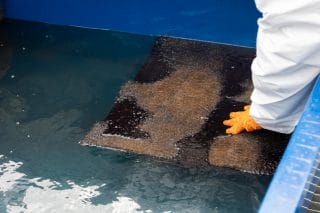
GOOD PERSPECTIVES FOR FURTHER DEVELOPMENT
Based on the tests, the adsorption capacity of the hair products seemed to be better with higher viscosity oils. Viscosity of oils increases with decreasing temperature and therefore it would be beneficial to investigate the usability of hair mats in cold conditions. The structural durability of mats in freezing temperatures may also be superior to their plastic-based counterparts.
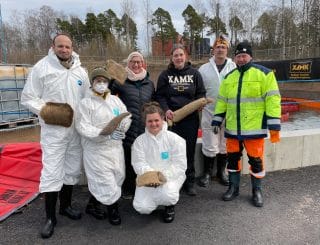
The cooperation between the LAB University of Applied Sciences and Xamk will therefore continue, as there is a clear need for further research. Combining the expertise of both universities offers good opportunities to raise the utility value of the hair material, otherwise considered as waste. The development of waste recovery through design and research will create entirely new resource-wise and circular economy-based business.
Writers
Justiina Halonen, Research Manager, Logistics and Seafaring, South-Eastern Finland University of Applied Sciences, xamk.fi/oilspillresponse
Paula Nurminen, Project Manager, Institute of Design and Fine Arts, LAB University of Applied Sciences, lab.fi/en/RDI/design
This text is a translation of an article published in the Xamk Next online magazine on 22.12.2022 entitled “Hiuksia nostattava uutuus öljyn rantakeräykseen?” (Halonen & Nurminen, 2022).

